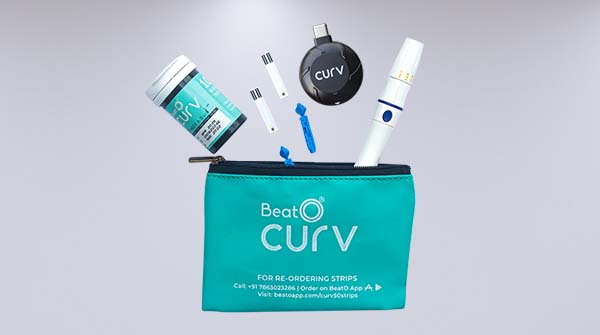Diabetes management needn’t be cumbersome or emotionally draining, especially when it comes to Type-1 and gestational variations. Incorporating CGM in your medical kit can drastically reduce the risk of associated illnesses such as kidney disease, nerve-related issues, and ophthalmic disorders. Proper management also leads to improved quality of life and reduced mood swings. Studies have shown that if diabetes is managed efficiently reduces the chances of being struck by the said disease by 40%.

So, what exactly is CGM?
This acronym stands for Continuous Glucose Monitoring, a device that offers a painless way of monitoring blood glucose levels around the clock. It typically takes snapshots at predetermined intervals. A continuous glucose monitoring tool consists of a miniature sensor that is “pierced” in the skin (in the form of a wire catheter) and also consists of a disc above, which performs like a receiver/transmitter. The blood sugar reading from this device is then converted from digital signals into a human-readable number, which is then sent to your connected wearable/digital device such as a smartphone. Unlike glucometer machines, this device is completely automated.
Introduction to CGM – Revolutionizing Diabetes Management
One needs to understand that in type-1 and gestational diabetes, the blood sugar level fluctuates widely. In such a scenario, using a traditional portable device that needs frequent finger pricks can be challenging. It not only hurts physically but also results in emotional pain.
The CGM device has revolutionized the way diabetes is managed. It painlessly provides frequent blood sugar updates and activates the tethered (connected) insulin pump whenever the body demands it. This on-demand feature simply means that you don’t have to inject insulin blindly, even when the body doesn’t need it. People with diabetes should also understand that while a gestational variant occurs in a pregnant woman (unable to produce insulin), type-1 diabetes is caused by an autoimmune disease, which prevents the pancreas from making the desired amount of insulin.
How CGM Works – Monitoring Glucose Levels in Real-Time
Although CGM is said to offer real-time data (reading), this is not the case. The reason is that this device uses interstitial fluid (ISF) found under the skin and not the blood; therefore, any change in the blood sugar level is refreshed after a certain period, generally after 10 minutes. In such a scenario, checking the blood sugar reading with a glucometer machine in tandem with CGM is highly advisable as it helps prevent hyperglycemia (high) or hypoglycemia (low) events. If you or your family member is unfortunately stricken by gestational or type-1 diabetes, make sure you exploit the above strategy for an efficient fight against this disease.
Benefits of CGM for Diabetes Management
After having searched for “glucometer digital” and careful study, you bought the most efficient and affordable traditional device. Great! Congratulations!! But did you know that checking the blood glucose level a couple of times a day can be dangerous? Some foods instantly give rise to sugar levels. At times, a simple workout may drop the same at alarming levels. These in-between periods can be catastrophic; therefore, a CGM is important in offering a broader picture. Mentioned below are some of the benefits of continuous glucose monitoring for diabetes management –
- Painless monitoring
- Continuous snapshots of blood sugar level
- Easily manageable and interpreted
- Data sharing with healthcare professionals
- Reminders for insulin intake can be easily set up
- Alerts for high and low sugar levels
- An insulin pump can be activated for a predefined level and thereby regulate insulin intake
- Helps prevent hyperglycemia and hypoglycemia events
Different Types of CGM Systems
Unlike “glucometer use”, which is relatively straightforward and offers “real-time” status of your blood sugar level, continuous glucose monitoring systems are available in two distinct flavours.
- Real-time continuous glucose monitoring (rtCGM) – This device is fully automated. It simply means it will automatically activate at predetermined intervals, measure the glucose level, and then provide easy-to-interpret data as well as the values.
- Delayed continuous glucose monitoring (isCGM) – A device belonging to this category typically demands scanning from the user. The wearer/patient needs to scan the device with a digital wearable / tool such as a smartphone to get the latest glucose value.
Both these devices can be worn either on the abdomen or upper arm.
Choosing the Right CGM System for You
Traditional glucose monitor is not an insignificant phrase or a menial task. It is as crucial as continuous monitoring. The only question is which type of CGM is right for you. If your blood glucose level is constantly changing or your body demands frequent insulin replenishment, then real-time continuous glucose monitoring (rtCGM) is a perfect choice. Type-1 people with diabetes can benefit immensely from rtCGM because these individuals suffer from fluctuating glucose levels.
BeatO offers Abbott Freestyle Libre and Abbott Freestyle Libre Pro series continuous glucose monitoring systems that are highly dependable, embedded with state-of-the-art technologies, affordable, and easily serviceable. Go for these devices if you are looking to manage your diabetes in the most relaxed manner.
Read More: CGM vs. Glucometer – Which Blood Glucose Monitoring System is Right for You?
Conclusion –
For individuals with diabetes or those responsible for their care, it is strongly recommended to utilize both traditional glucometer devices and continuous glucose monitoring systems, particularly in cases of gestational and type-1 diabetes.
Traditional glucometers offer immediate, unaltered blood sugar readings, while CGM systems not only aid in diabetes management but also provide valuable insights into dietary factors that may lead to blood sugar spikes. This knowledge can help prevent occurrences of both hyperglycemia and hypoglycemia events.




